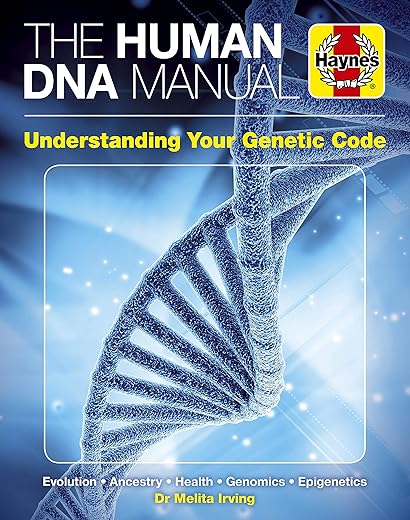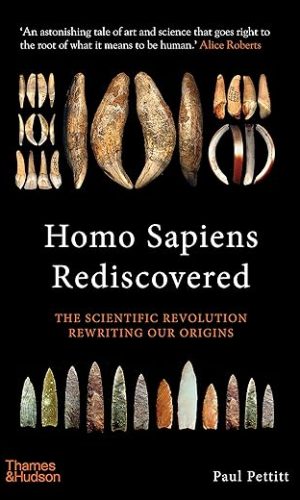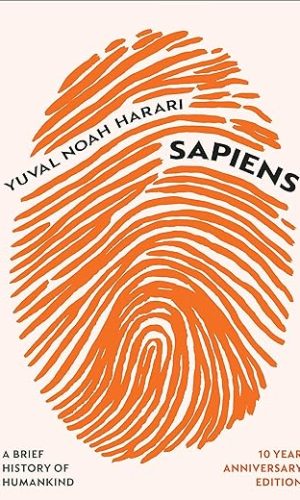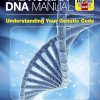The Human DNA Manual. Understanding Your Genetic Code: Ancestry • Health • Identity • Epigenics • Criminality (Haynes Manuals)
£8.70£21.80 (-60%)
This book brings together all the fascinating strands of genetic science and explains in an accessible way how DNA is being mapped, classified, utilised and understood. With chapters on sequencing the human genome, genetic disorders, gene editing and therapy, human ancestry and cloning, this book shows how outstanding breakthroughs in genetic science is informing us about our past and defining our modern lives. * Explains the structure and purpose of DNA and how it was discovered * Tracks the history of human DNA, the development of our species, genetic disorders and mapping the human genome * Includes sections on the significance of DNA in crime detection and in the future of medicine
Read more
Additional information
| Publisher | Haynes Publishing (28 Oct. 2019) |
|---|---|
| Language | English |
| Hardcover | 160 pages |
| ISBN-10 | 1785215949 |
| ISBN-13 | 978-1785215940 |
| Dimensions | 21.59 x 1.27 x 27.94 cm |









by penname
Superb content, although I’ve yet to read all of it in detail. Sublime illustrations add enormously to the reading pleasure. Not least, the most fascinating and potentially influential subject and story ever to grace the history of human discovery and achievement. Now firmly on course to dramatically benefit all life forms on Earth, provided we don’t abuse it. How I’d love to be able to see the outcome 100 years from now (assuming we haven’t vaporized ourselves by then).
However, it saddened me, as it always does, to be reminded that Watson and Crick are still recognised as the discoverers of the structure of DNA. This book does, however, make a slightly better, if brief attempt than far too many texts to give some long overdue credit to Rosalind Franklin for her pivotal research, the theft (IMHO) of which (along with the cancer her research induced) deprived her of the fame and rewards that she inarguably deserved. As Crick subsequently admitted, Franklin was two weeks or so away from the discovery instead credited to Watson and he, the difference being her immaculate scientific approach, as opposed to their stabs-in-the-dark guesswork latterly illuminated entirely by her work.
Highly recommended. As are so many of these fabulous Haynes books, the Apollo and Formula One series being excellent examples.
by M. Morgan
You read so much about genetics in the these days – ancient DNA, designer babies, epigenetics etc – but if you’re looking for a simple explanation of what it all means, where to turn? Try reading the Wikipedia page on any of these subjects – absolute gibberish!
So it was a delight to get my hand on this straightforward guide to the subject. Written in an engaging, clear style that’s easy for the non-specialist to read, I can now tell you a what a gene is, what the difference between DNA and RNA is (the first’s a recipe, the second a sort of chef-de-partie – my words, not Dr Irving’s!) and, frankly, pretty much everything that goes into creating and replicating life.
It’s a fascinating read which, what with my curious mind, had me get through the lot in a single sitting (well, I was on a long flight but still…I could have been watching Fast and Furious XXIX or whatever we’re up to now!).
If I, a (not entirely un)intelligent humanities grad, can get my head round this, so can you. There are lots of useful diagrams, suggestions for further reading, boxes containing weird and wonderful facts. I had been thinking about doing 23&Me, now I’m not sure if I’d want to – the chapter on the subject is most illuminating and valuable for people like me thinking about doing the test or for making sense of it, if you already have.
The good doctor’s passion for the subject really comes across and I felt like I’d had an enjoyable time reading it and maybe even learned something. I imagine I’ll have forgotten it all in a week but also know that I only have to pick it up again and I’ll be able to quickly get up to speed again.
At least two family members can expect to find a copy in their Christmas stocking this year. I hope you enjoy it as much as I did.
by gordonsmiley
Sadly, this is another example of the wave of recent publications written by authors who lack the necessary depth of understanding on their chosen subject. Unlike every other Haynes manual I own, the author’s name is also written on both the front-cover, and the spine. This suggests the book is, first and foremost, a form of self-promotion, rather than a genuine contribution to the field of knowledge. The author is a doctor at a couple of London hospitals, and one suspects the primary motive for this work is professional self-aggrandisement. Many hospital doctors are bluffers and charlatans, and the text of this book merely confirms this impression.
The explanation and information proferred in virtually every section of the book is either incoherent or incomplete. Perhaps the best example is the fact that, in a book on DNA, the author neglects to actually define what a gene is. The term ‘gene’ is used throughout the text, of course, and in the introduction to Chapter 1, genes are referred to as “units of heredity.” However, nowhere will the reader actually find a gene defined as a segment of DNA which codes for protein (or for directly functional RNA). That’s a staggering oversight.
It gets worse as well. The section on dominant and recessive alleles is confused about what the numeric fractions actually are in the case of cross-bred flowers of different colour. The section on sequencing technology is unintelligible. The section on ancient DNA (p70ff) is desperately confused, asserting that the people associated with Corded Ware culture, who supposedly emerged 4,500 years ago, were the people who introduced Ancient North Euroasian ancestry to Europe, defined on p70 as the people who lived both 15,00 years ago (a typo presumably) and exemplifed by a boy, discovered near Lake Baikal, who lived 24,000 years ago. So the Corded Ware people must have travelled back in time.
And on it goes. The author should stick to the routine of clinical practice.
by paul houghton
The book gives you insight to genetics ancestry and genetic illness the style of the book is well written and is a big help on your insight to how dna works and who discovered it.
by David Greenly
Lovely book. Well laid out and clear and simple descriptions of a really important subject.
I read as someone with no science background (apart from doing foolish things with Bunsen burners when the teacher turned his back) – wish science was accessible like this back in the day.
High recommend.
by john
Although I am not professional geneticist, I like short yet precise explanations, helpful and nice pictures
by Terry Myers
Brilliant book that was understandable for teenagers. Really interesting and easy ready. Helped with school work and research. I really learnt a lot from this and has some great things to do in it. Highly recommend to anyone.
by J.
Not in depth scientific information but very good as a non academic introduction to DNA